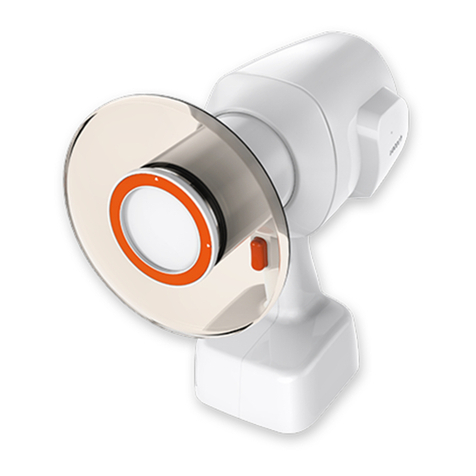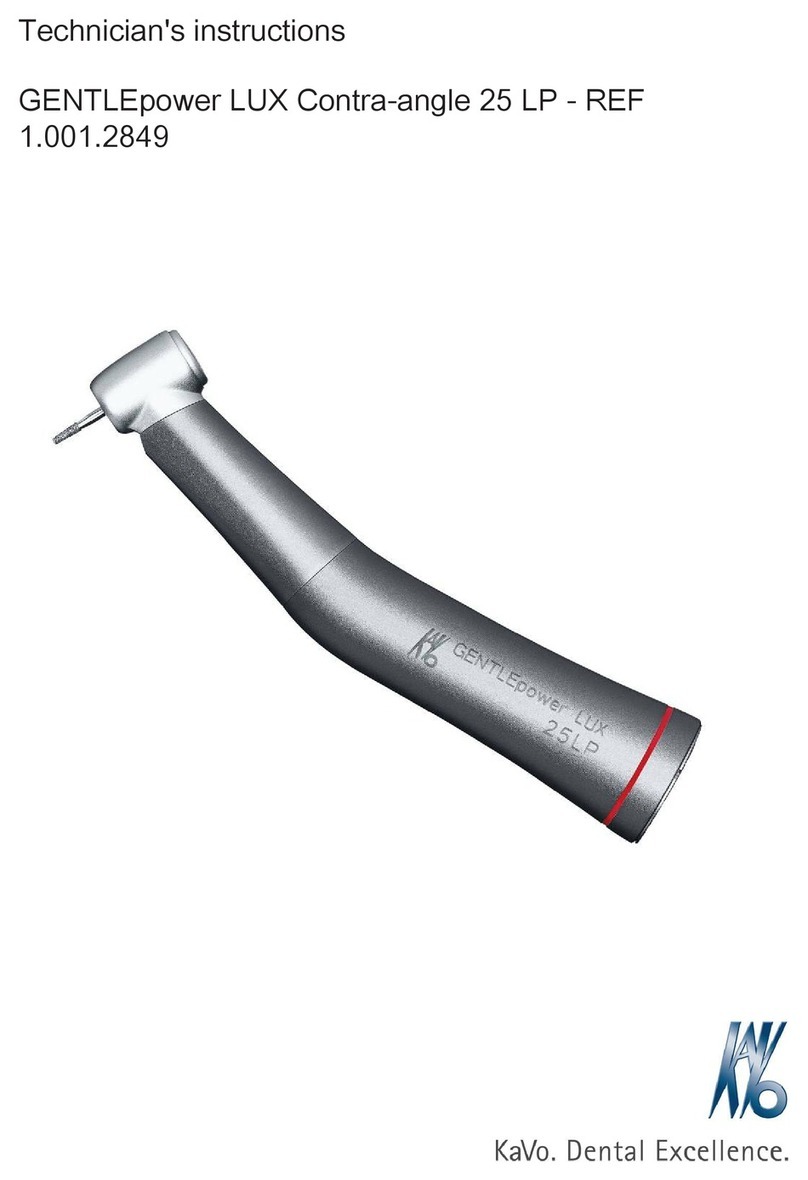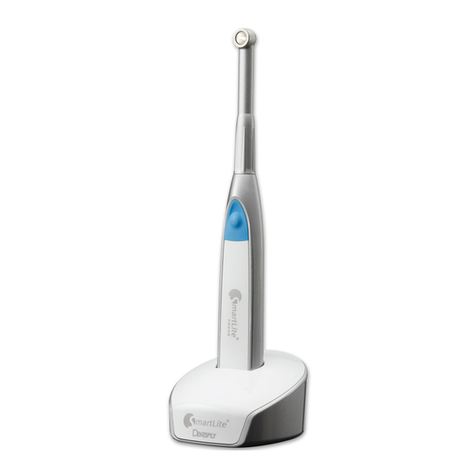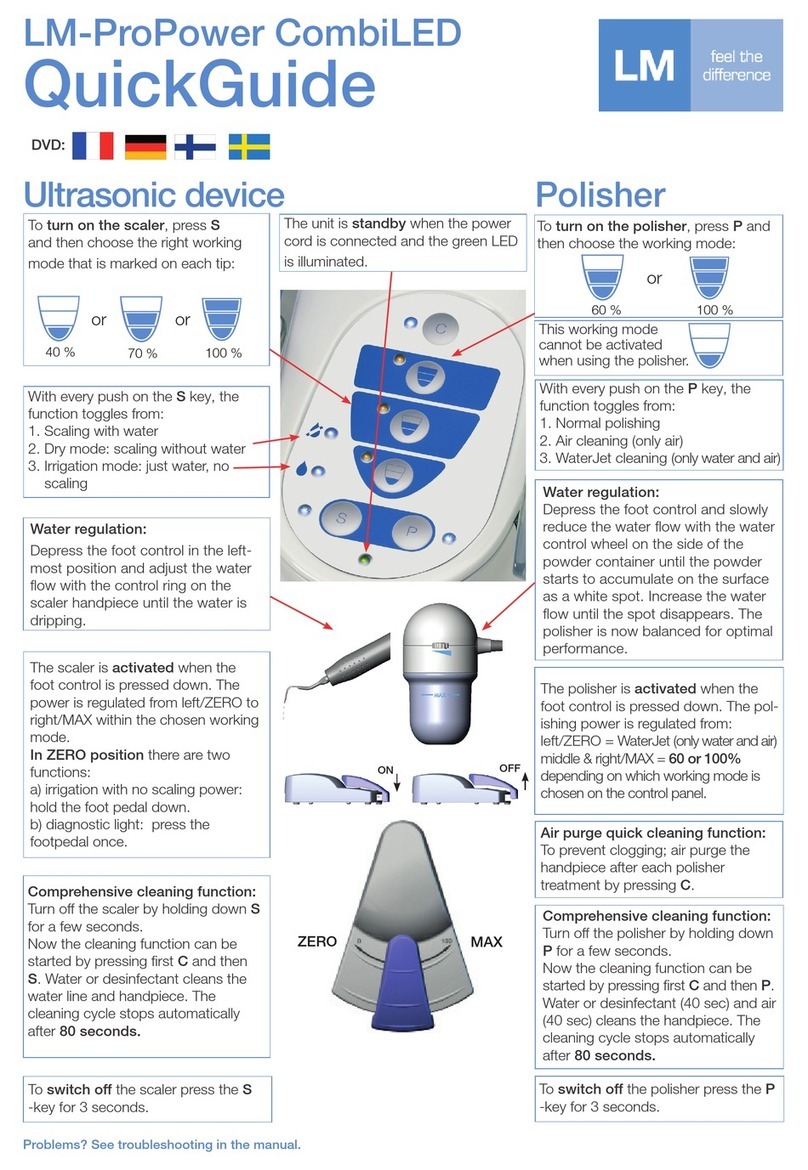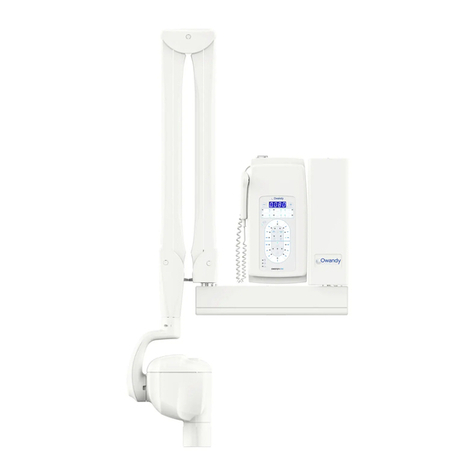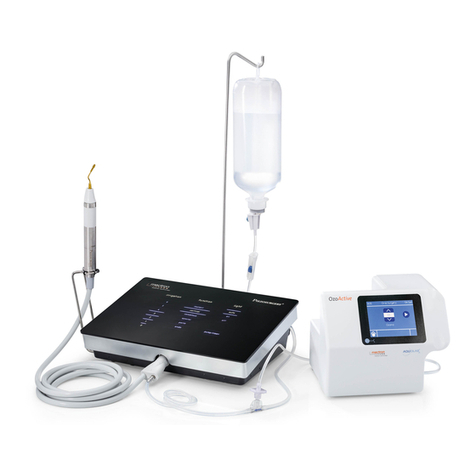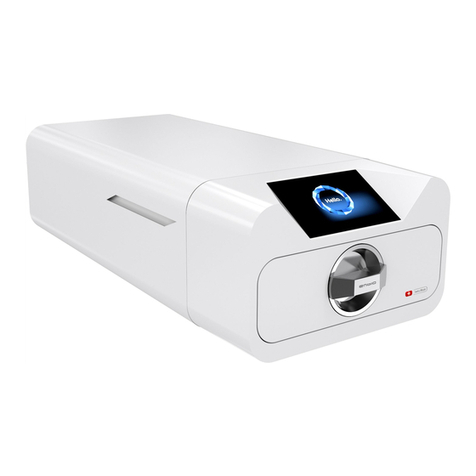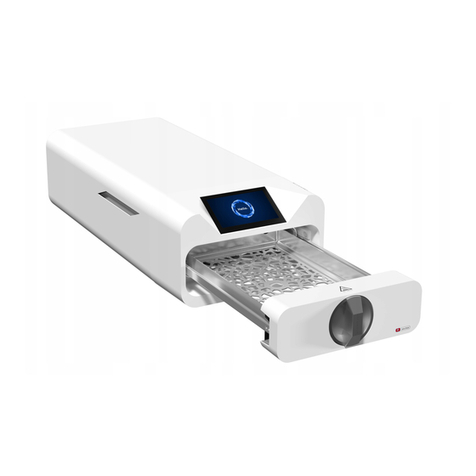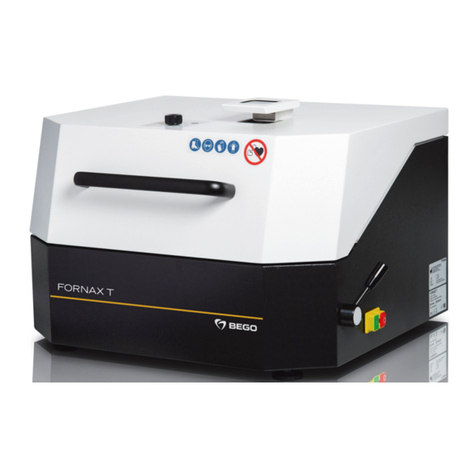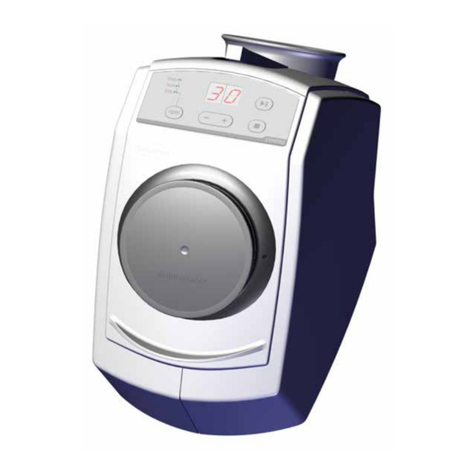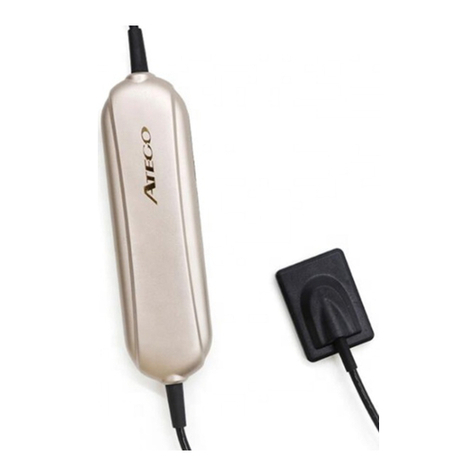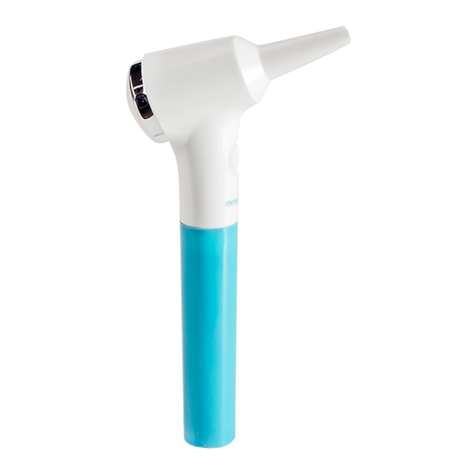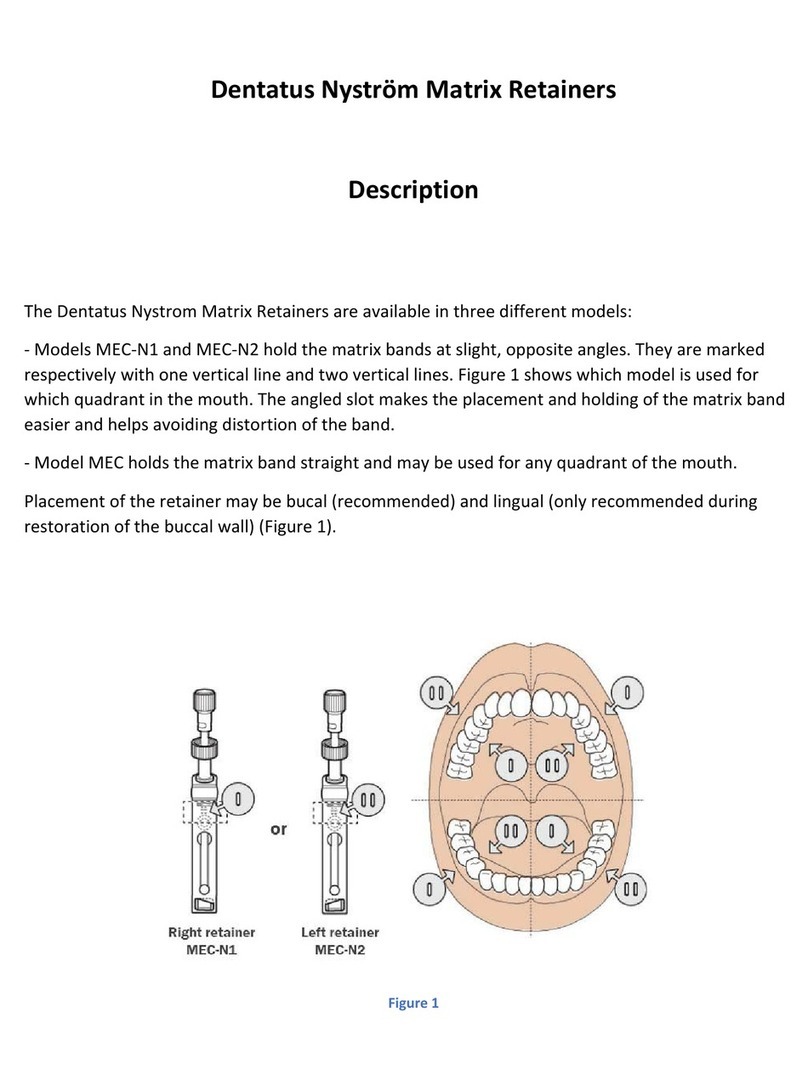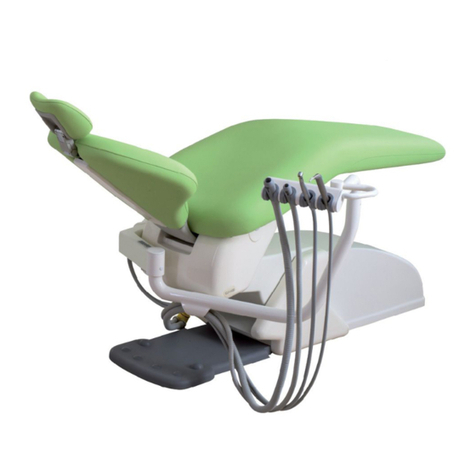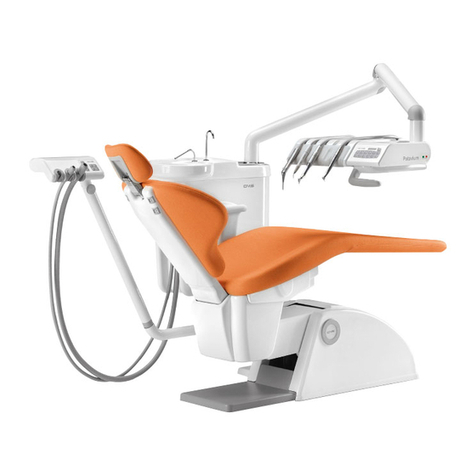
4 5
registered with the General Inspectorate of
Environmental Protection; this unit handles
selective waste collection.
1.4 Precautions, requirements and recommendations
- Enbio S complies with IEC 60601-1-2:2014 (Edition 4.0)
- Use of this equipment adjacent to or stacked with other equipment should be
avoided because it could result in improper operation. If such use is necessary,
this equipment and the other equipment should be observed to verify that they
are operating normally. Max power cord length is 160 cm.
- Use of accessories and cables other than those specied or provided by Enbio co-
uld result in increased electromagnetic emissions or decreased electromagnetic
immunity of this equipment and result in improper operation.
- Portable RF communications equipment (including peripherals such as antenna
cables and external antennas) should be used no closer than 30 cm (12 inches)
to any part of the Enbio S, including cables specied by Enbio. Otherwise, degra-
dation of the performance of this equipment could result.
- The EMISSIONS characteristics of this equipment make it suitable for use in in-
dustrial areas and hospitals (CISPR 11 class A). If it is used in a residential environ-
ment (for which CISPR 11 class B is normally required) this equipment might not
oer adequate protection to radio-frequency communication services. The user
might need to take mitigation measures, such as relocating or re-orienting the
equipment.
– The user is responsible for the installation, correct operation and maintenance of
the device in accordance with instructions provided in this user manual. If need-
ed, contact the service or the supplier of the device.
– The sterilizer is not intended for sterilizing liquids, biomedical waste or pharma-
ceutical products.
– The sterilizer must not be used if explosive gases or vapours are present in the air.
– After the cycle is completed, the load is hot. Remove tools or packs from the
chamber using appropriate thermal gloves or equipment that prevents burns.
– Do not remove the rating plate or any other elements of labelling from the de-
vice.
– Follow guidelines for preparing tools for sterilization.
– Pouring water or other liquids on the device may cause a short-circuit.
– Prior to inspection, maintenance or servicing, turn o the device and disconnect
it from the power source.
– Servicing may only be performed by trained service personnel and using original
replacement parts.
– The device is intended for indoor use only.
– Max working high elevation of the device is 2,000 m above sea level.
– Pollution Degree 2: Normally only nonconductive pollution occurs. Temporary
conductivity caused by condensation is to be expected.
– Overvoltage Category II.
–
If the equipment is used in a manner not specied by the manufacturer, the
protection provided by the equipment may be impaired.
– Use only detachable cord that rated equal or greater to the equipment electrical
ratings.
Read this Operating Manual carefully before using this device. Install and
operate the device strictly as specied herein. Comply with all safety re-
quirements for the device.This will ensure proper and safe operation of this
device. Any other application, inconsistent with this manual, may lead to
dangerous accidents. Restrict unauthorised personnel access to the device
and train the personnel handling the device. An operator of this device is
any person who, by training, experience and knowledge of applicable ref-
erence standards, manuals and occupational health and safety regulations
has been authorised for the essential operation with the device and who
is capable of identifying and avoiding the hazards related to operation of
this product.
Always append this Operating Manual with the device if transferred to a
new owner. The Operating Manual contains detailed information about
assembly, installation, initial start-up, use, repairs and maintenance of the
device. If the device is used as intended, this Manual will provide sucient
guidance to qualied personnel. Keep this Operating Manual close to the
device and easily accessible at all times. As required by continuous im-
provement of the product, the manufacturer has the right to amend this
1. INTRODUCTION
1.1 Purpose
The purpose of this user manual is to provide information about the ENBIO sterilizer and
ensure:
• proper installation and setup,
• optimum use,
• safe and reliable operation,
• regular and correct maintenance and servicing in accordance with requirements.
The sterilizers conrmed to UL 61010-1:2012 Ed.3+R:19Jul2019, CAN/CSA C22.2 NO.
61010-1-12 (R2017), UL 61010-2-040:2016 Ed.2, CSA C22.2#61010-2-040:2016 Ed.2
1.2 Indications for Use.
The Enbio S is an air-removal (pre-vacuum) table-top steam sterilizer intended for use by
a health care provider to sterilize medical products by means of pressurized steam. It is
suitable for the sterilization of dental and medical instruments that are validated to be
sterilized by steam. The Enbio S has not been designed to sterilize liquid loads, bio-medical
waste or materials not compatible with steam sterilization. The processing of such loads
may result in incomplete sterilization and/or damage to the autoclave.
Please refer to the table below for program name, load description, sterilization tempera-
ture, exposure time, drying time and maximum load.
PRO-
GRAM
NAME
LOAD DESCRIPTION STER-
ILIZA-
TION
TEM-
PERA-
TURE
STER-
ILIZA-
TION
TIME
DRY-
ING
TIME
MAX-
IMUM
LOAD
MAX-
IMUM
LOAD
134˚C solid objects, small porous objects, simple
objects recessed, narrow-clearance items,
dental handpieces, and textiles;
wrapped and unwrapped
134˚C
(273˚F)
4 min-
utes
3 min-
utes
0.5 Kg
/1.1 lbs
121°C solid objects, small porous objects, simple
objects recessed, narrow-clearance items,
dental handpieces, textiles, and plastics;
wrapped and unwrapped
121°C
(250˚F)
30
min-
utes
5 min-
utes
0.5 Kg
/1.1 lbs
The sterilizer is suitable for use in the vicinity of other powered medical
products.
The ENBIO device may not be used to sterilize liquids, biomedical
waste or pharmaceutical products.
The device is intended for professional use by properly trained sta only.
1.3 Symbols used on the device
This symbol is located on the front of the device, on the
upper part of the drawer front. It is recommended to
maintain caution due to high temperature within and
around the operating chamber.
This symbol is located on the device’s rating plate and
indicates the serial number.
This symbol is located on the device’s rating plate and
indicates compliance with EC guidelines.
This symbol is located on the device’s rating plate and
indicates the device’s date of production.
This symbol is located on the device’s rating plate and
indicates the device’s manufacturer.
This symbol is located in the user manual and indi-
cates reading the information provided in the user
manual.
DIRECTIVE 2012/19/EU OF THE EUROPEAN
PARLIAMENT AND OF THE COUNCIL of 4
July 2012 on waste electrical and electronic
equipment (WEEE) , collection point
solid objects, non-porous objects,
simple instruments (such as scis-
sors, handles, pliers, chisels,
probes, etc.), and dental handpieces;
unwrapped
* - Immediate Use Steam Sterilization
cycle
134°C
FAST*
134˚C
(273˚F)
4 min-
utes
N/A 0.5 Kg
/1.1 lbs
